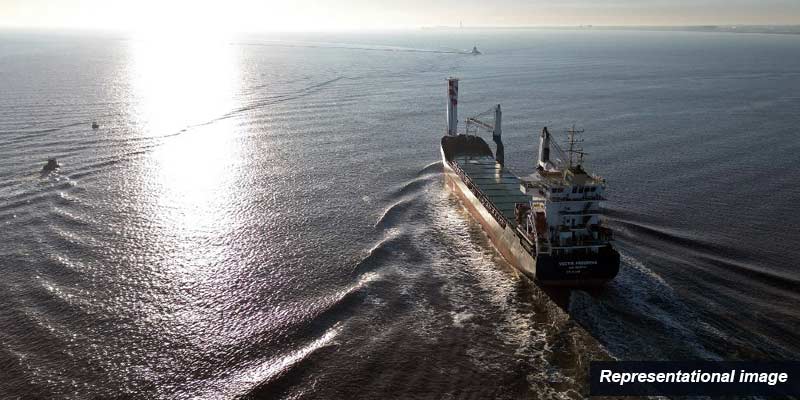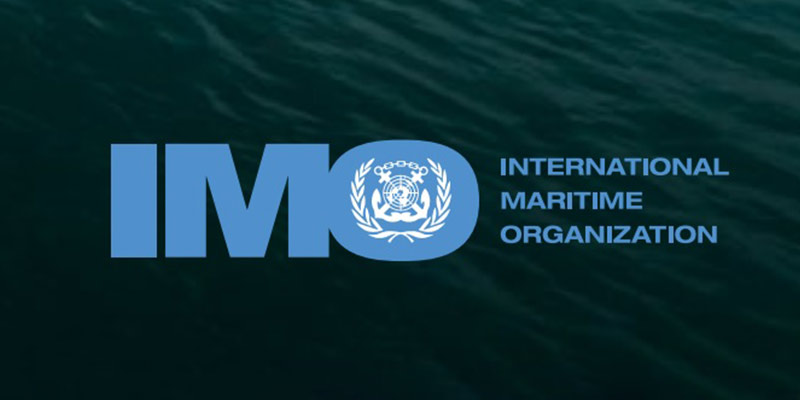- World
- Apr 12
IMO concludes historic deal to cut shipping emissions
• After years of intense negotiations, the International Maritime Organisation (IMO) has achieved an important step towards establishing a legally binding framework to reduce greenhouse gas (GHG) emissions from ships globally, aiming for net-zero emissions by 2050.
• The IMO Net-zero Framework is the first in the world to combine mandatory emissions limits and GHG pricing across an entire industry sector.
• It will set mandatory fuel standards and introduce an industry-wide carbon pricing mechanism.
• Approved by the Marine Environment Protection Committee during its 83rd session (MEPC 83), the measures include a new fuel standard for ships and a global pricing mechanism for emissions.
• These measures, set to be formally adopted in October this year before entry into force in 2027, will become mandatory for large ocean-going ships over 5,000 gross tonnage, which emit 85 per cent of the total CO2 emissions from international shipping.
Amendments to MARPOL Annex VI
• The International Convention for the Prevention of Pollution from Ships (MARPOL) is the main international convention covering prevention of pollution of the marine environment by ships from operational or accidental causes.
• The MARPOL Convention was adopted on 2 November 1973 at IMO.
• The approval of draft amendments to MARPOL Annex VI mandating the IMO net-zero framework represents another significant step in the collective efforts to combat climate change, to modernise shipping and demonstrates that IMO delivers on its commitments.
• MARPOL Annex VI refers to provisions specifically addressing air pollution.
• The IMO Net-Zero Framework will be included in a new Chapter 5 of Annex VI to the International Convention for the Prevention of Pollution from Ships (MARPOL).
• MARPOL Annex VI currently has 108 Parties, covering 97 per cent of the world’s merchant shipping fleet by tonnage, and already includes mandatory energy efficiency requirements for ships.
• The goal is to achieve the climate targets set out in the 2023 IMO Strategy on the Reduction of GHG Emissions from Ships, accelerate the introduction of zero and near zero GHG fuels, technologies and energy sources, and support a just and equitable transition.
Under the draft regulations, ships will be required to comply with:
i) Global fuel standard: Ships must reduce, over time, their annual greenhouse gas fuel intensity (GFI) – that is, how much GHG is emitted for each unit of energy used. This is calculated using a well-to-wake approach.
ii) Global economic measure: Ships emitting above GFI thresholds will have to acquire remedial units to balance its deficit emissions, while those using zero or near-zero GHG technologies will be eligible for financial rewards.
Ensuring compliance
There will be two levels of compliance with GHG Fuel Intensity targets — a Base Target and a Direct Compliance Target at which ships would be eligible to earn “surplus units”.
Ships that emit above the set thresholds can balance their emissions deficit by:
i) Transferring surplus units from other ships.
ii) Using surplus units they have already banked.
iii) Using remedial units acquired through contributions to the IMO Net-Zero Fund.
IMO Net-Zero Fund
• A key element of the new framework is the IMO Net-Zero Fund, which will collect revenues from the carbon pricing mechanism.
• The IMO Zet-Zero Fund will be established to collect pricing contributions from emissions.
These revenues will then be disbursed to:
i) Reward low-emission ships.
ii) Support innovation, research, infrastructure and just transition initiatives in developing countries.
iii) Fund training, technology transfer and capacity building to support the IMO GHG Strategy.
iv) Mitigate negative impacts on vulnerable States, such as Small Island Developing States and Least Developed Countries.
Next steps
• Upon approval, the draft amendments to MARPOL Annex VI will be formally circulated to IMO Member States.
• The draft regulations will undergo formal adoption in October 2025.
• If ratified during the IMO session, as expected, the measures will enter into force in 2027, giving the industry time to adapt to new requirements and invest in alternative fuels and technologies.
International Maritime Organisation
• The International Maritime Organisation is a specialised agency of the United Nations which is responsible for measures to improve the safety and security of international shipping and to prevent pollution from ships.
• It has an integral role in meeting the targets set out in United Nations Sustainable Development Goal (SDG) 14: Conserve and sustainably use the oceans, seas and marine resources for sustainable development.
• It was established by means of a Convention adopted under the auspices of the United Nations in Geneva on March 17, 1948 and met for the first time in January 1959.
• It currently has 176 Member States and three Associate Members. There are 66 inter-governmental organisations which have observer status with IMO, and 89 international non-governmental organisations in consultative status with IMO.
• International shipping transports more than 80 per cent of global trade to peoples and communities all over the world. Shipping is the most efficient and cost-effective method of international transportation for most goods. It provides a dependable, low-cost means of transporting goods globally, facilitating commerce and helping to create prosperity among nations and peoples.
• The mission of the IMO is to promote safe, secure, environmentally sound, efficient and sustainable shipping through cooperation.
• It is also involved in legal matters, including liability and compensation issues and the facilitation of international maritime traffic.
• Its role is to create a level playing-field so that ship operators cannot address their financial issues by simply cutting corners and compromising on safety, security and environmental performance.
• IMO, has promoted the adoption of some 50 conventions and protocols and adopted more than 1000 codes and recommendations concerning maritime safety and security, the prevention of pollution from shipping and other related matters.
• With regard to the protection of the marine environment, a series of conventions and other instruments, which are periodically updated and amended, have been adopted to address the prevention of pollution, preparedness and response to marine pollution incidents and compensation for pollution damage.
Structure of IMO
• The organisation is led by the Secretary General supported by a Secretariat based at IMO headquarters in London. Secretary Generals are appointed for a maximum of two terms, each lasting four years.
• The IMO Assembly consists of all member states and is the highest governing body of the organisation. It is responsible for approving the work programme, voting the budget and determining the IMO’s financial arrangements.
• The IMO Council is elected by the Assembly for terms of two years. It acts as the executive organ of IMO and is responsible, under the Assembly, for supervising the work of the organisation.
• Between sessions of the Assembly, the council performs the functions of the assembly, except that of making recommendations to governments on maritime safety and pollution prevention.
Manorama Yearbook app is now available on Google Play Store and iOS App Store


